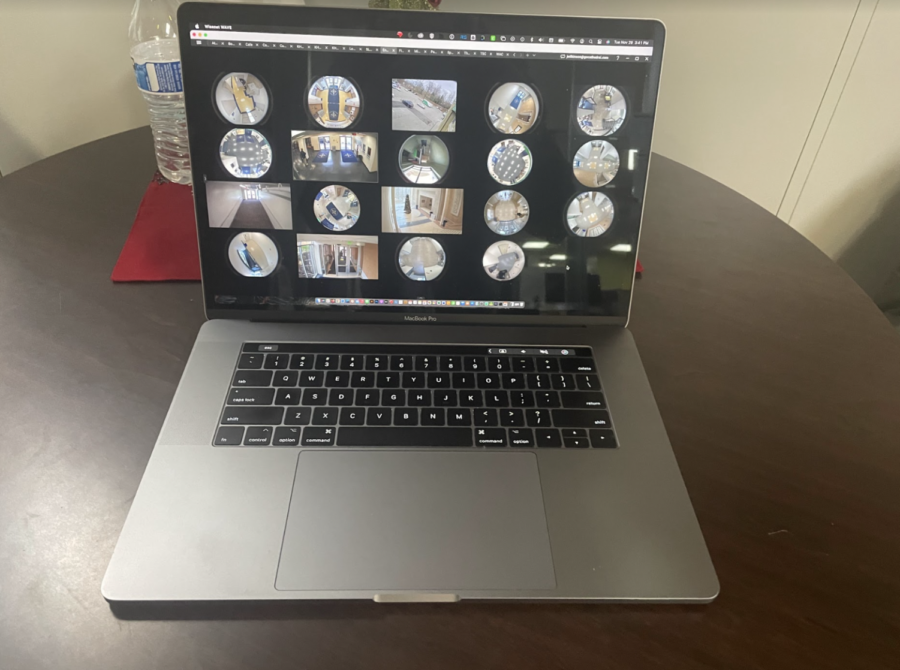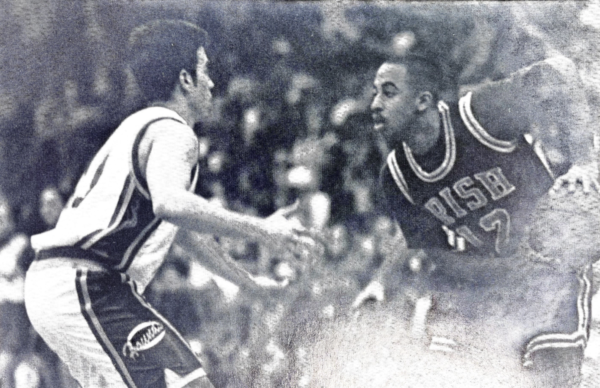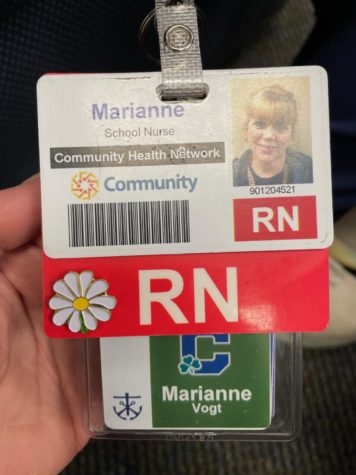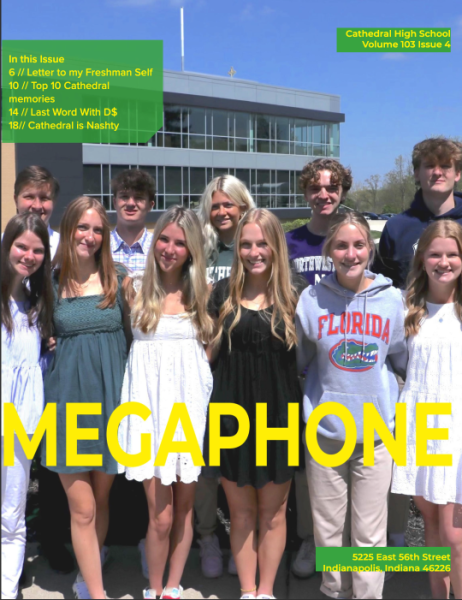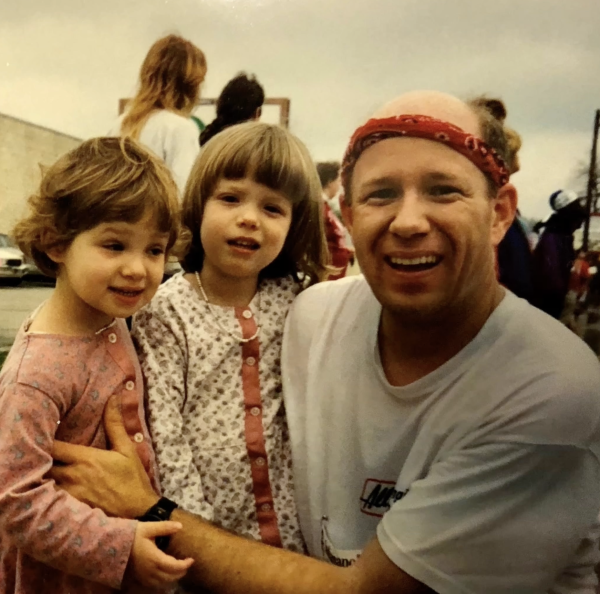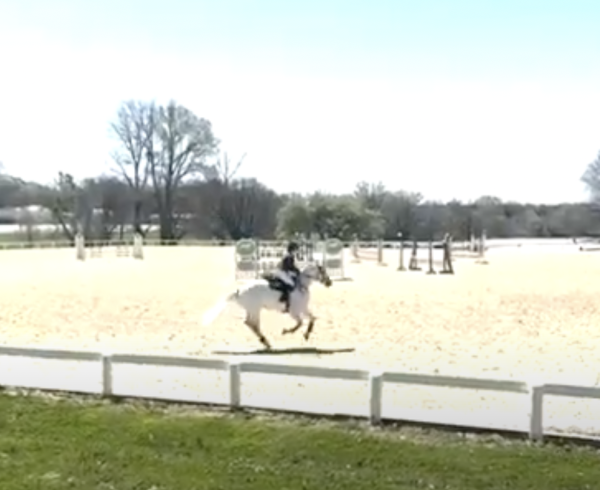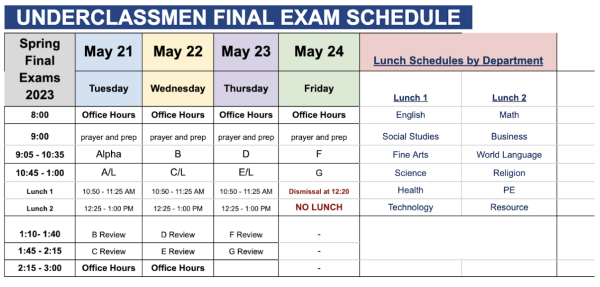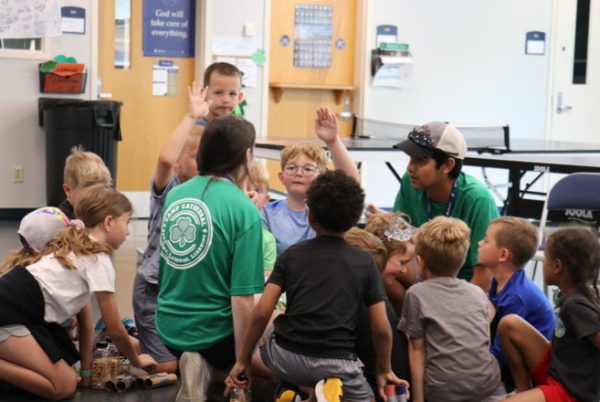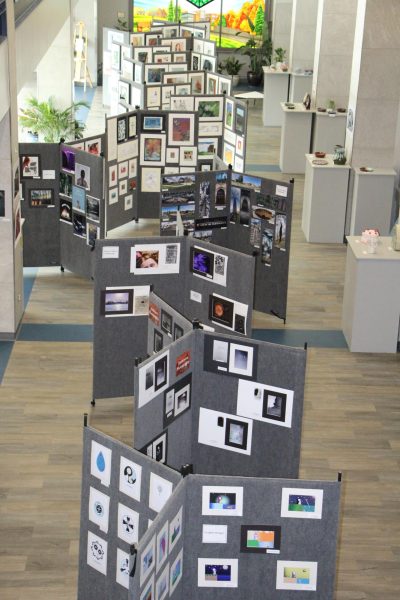Succeeding in School Safety
The first intruder drill of the year was held on December 2, and students learned how to hide from potential threats.
As of December 20th, 2022, there have been 300 shooting events at schools around the country. From Robb Elementary in Uvalde, Texas, to the Central Visual & Performing Arts High School in St. Louis, Missouri, and to the University of Virginia, schools have been plagued by an epidemic of violence and left to grieve the loss of students, teachers and community members. School shootings have been on the rise in America in recent years which has led to students needing to participate in active intruder drills. Cathedral held its first intruder drill of the year on December 2. Principal Julie Barthel, a member of the school’s Safety Team, said, “We want to be excellent at everything that we do. We were very prepared when COVID hit. This is the same, but we hope we never have to use it.”
The Safety Team is in charge of protecting campus, and it is made up of a teacher from each building, Principal Barthel, a counselor, the nurse, technology directors, recently hired school resource officer (SRO) Dominique Smith and more. “We have met weekly this year to (refine) our intruder drill plan. Law enforcement is switching to a different strategy, so we need to retrain our teachers on the strategy,” Barthel said. The strategy consists of three parts: run, hide, fight.
With three buildings on campus, if there is an intruder, the occupants in the other two buildings would run. Those in the breached building would hide, and if necessary, fight the intruder.
The intruder drill on December 2 put into action the plan which the Safety Team formulated with the help of an IMPD officer. Barthel said, “Our plan starts with an announcement saying ‘this is not a drill, we have an active threat on campus’.” Teachers are trained to close their doors which lock automatically, cover the windows of their doors, and instruct students to hide in the designated areas of each classroom.
English teacher Lizabeth Bradshaw gave insight on how teachers have been trained in prior years. “(Officer Tabby, a former SRO,) fired off a blank (round) down the hall in order for staff to hear what it would sound like,” she explained. Teachers also receive training from the Safety Team, who is trained by law enforcement, and watch informative presentations about responding to intruders.
If a threat were to arise, Officer Smith, a former full time patrolman with the Fishers Police Department and Reserve Officer of the Cicero Police Department, would respond to it. While Officer Smith has only been on campus for a couple of weeks, she said, “I feel so welcomed. It’s overwhelming how nice everybody is, and the students have been extremely sweet to me.”
Within her first few days, Officer Smith oversaw the intruder drill which helped her get an in depth view of the school’s security measures. “I think the (drill) went really well. The school is very keen on locking down and providing safety to the students and staff. It’s nice to come into an environment that wants to be proactive about (safety),” Officer Smith said. Junior Sarah Lowe agrees with this sentiment adding, “I usually don’t have any concerns about safety, especially (because) we have lanyards (to) get indoors.”
Simple technology such as lanyards, which identify students and staff, auto-lock doors and security cameras are paramount to keeping the school secure and mitigating any threats that could arise.
Technology Director and Safety Team member Mr. Jim Wilkinson is tasked with locating an intruder on school cameras. Once the intruder is located, teachers will be given information regarding whether their classes should run. During the drill, Wilkinson observed the cameras to make sure nobody was in the hallways.
He also brushes up on his camera skills during fire drills. He said, “Whenever there’s a fire drill, I go through the different cameras to make sure there’s no students wandering the hallways.” Wilkinson noted that he set up the camera system, so he is familiar with it. However, he admits, “There’s a lot of pressure. The quicker we find the person, the more lives can be saved. It comes with a lot of pressure (because) I don’t know what I’m going to see on the camera,” Wilkinson continued, “It weighs heavily, but I think the importance of finding (the intruder quickly) outweighs what you may run into.”
The possibility of a violent attack at a school was unthinkable just 23 years ago, before the infamous school shooting at Columbine High School in 1999. Newer generations have had to grow up participating in intruder drills. When she was in middle school, Lowe said that drills consisted of “mainly just hiding under desks. They would only last about ten minutes. I wouldn’t say they were anything extensive, but probably enough for a middle schooler to comply with.” This new reality has heightened the situational awareness of many students as well. Lowe explained, “I do put myself in (an active intruder) scenario—like ‘if I were in this class, where would I go?’. And a lot of the time, I kind of have a general idea of what I would do.”
Bradshaw said that when she began teaching at Cathedral in 1996, students did not have to worry about threats because school shootings weren’t an issue. But now, she says, “It’s sad that we have to take time out of class (for intruder drills), and we affirm fears in our students that they’re not safe in our schools. Cathedral is such a beautiful campus, and has such a safe, homey feeling that it is a poverty to us to have to have this response necessary.” Lowe agreed with this, adding, “It’s unnerving. The fact that we have to worry about (intruders) in the first place. It’s just become so common, and it’s very viable that it could happen.”
Officer Smith hopes her presence on campus will quell any fears students may have. With experience working in law enforcement, Officer Smith finds it profoundly important to connect with those she serves. During her time with the Fishers Police Department, Smith said, “I knew the community, and I was able to drive through neighborhoods, relate to kids and stop by and play basketball—small things that don’t seem very big but in the grand scheme of things it is important,” Officer Smith continued, “(I hope to build) strong relationships with students so that they can see me in a uniform, but also know that I’m their friend—someone to listen and help guide them down the right path.”
While Lowe feels safe at school, she thinks the school could make her feel even safer by conducting drills during each class; she also added that a friend of her’s agreed with this. In past years, intruder drills have not been frequently held. However, this school year, Barthel said, “Our goal, after we come back (from) Christmas (break), is to do (intruder drills) by period because you need to know, as a student, every period of the day where (you) would run, or where (you) would hide.”
Barthel admits, “(Intruders are) a hard thing to talk about, (but) you have to talk about it. It’s going to scare some kids and even some adults to talk about it, but that’s your best defense—to actually have hard conversations about ‘what would happen if’.” In addition to this, Bradshaw believes that “having a plan, having practiced and knowing more about what (students) ought to do should hopefully help them feel less afraid, more aware and able to deal with a threat, if (one) were to (occur).”
At the end of the day, Barthel said everyone can do their part in maintaining the safe atmosphere on the Hill. She also reassured any students or parents who might be anxious about school safety, and emphasized that the school is going the extra mile to have a prepared, secured campus. “We have to be prepared,” Barthel said.
Wilkinson also noted, “We’re doing the best we can for the simple fact that we are communicating and talking about it. A lot of places shy away from communicating, but I think the more we communicate, the more we practice, the more we continue to (utilize) the newest information out there, (that’s) the best thing we can do. We’re going to do the absolute best (that) we possibly can. The more you practice, the more natural it becomes, and we’ll keep people safe.”

Daniel Kent is a senior and Managing Editor for the Irish Connection Media Network and the Megaphone and has been on staff since his sophomore year. He...


